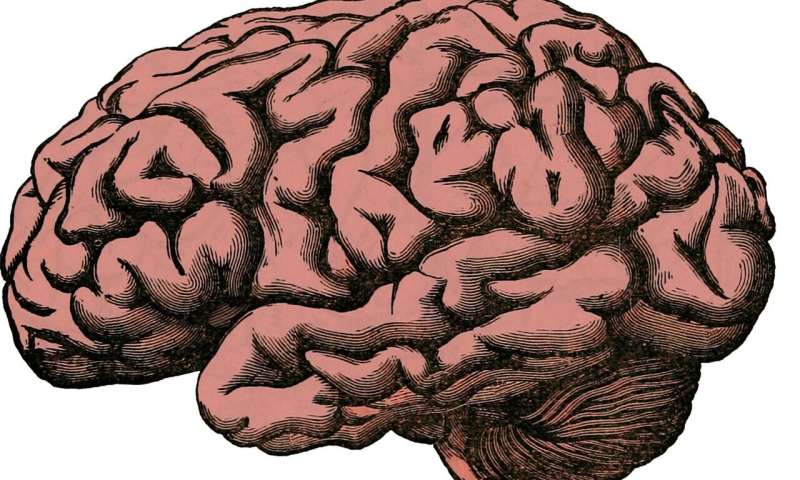
A woman who was blind for 16 years was able to see with a brain implant rather than artificial eye, and that has sparked a number of new reports about the latest progress made in exploring the sight restoring potential of brain implants.
A focus on earlier research in restoring vision has been on creating an artificial eye or retina. Not this one.
The much-quoted story that appeared in MIT Technology Review was headlined "A new implant for blind people jacks directly into the brain."
The system has become a talking point because it is bypassing the eyes yet allowing this woman to have "rudimentary" vision. The system was developed by Eduardo Fernandez director of neuroengineering at the University of Miguel Hernandez de Elche in Spain.
Futurism explained the procedure in simple terms:
A pair of glasses fitted with a camera connects to a computer. The computer translates the camera's live video feed into electronic signals. Those signals are then sent via a cable to a port surgically embedded in the back of the woman's skull. That port connects to an implant in the visual cortex of the woman's brain.
Interesting Engineering described the results: During her six-month trial with Fernandez, Gómez was able to see—that is, "in extremely low-resolution a version of what the world looks like. It came out looking like glowing whitish dots and shapes, but it was something other than pure darkness." MIT Technology Review similarly described the results as "a very low-resolution semblance of the world represented by glowing white-yellow dots and shapes."
So, is that really seeing?
Bhaswati Guha Majumder, International Business Times-: "Even though while using the glasses what she saw in her mind was little more than glowing dots, it was still enough to allow her to identify letters, lights and people."
The reports provided a background of the woman and her condition that led to blindness. "When Bernardeta Gómez was 42, toxic optic neuropathy destroyed the bundles of nerves that connect her eyes to her brain, which led to the blindness and was unable to detect light," he wrote.
It was noteworthy to add that she was completely blind. She could not see light nor structures.
Why not just give her an artificial eye? Russ Juskalian in MIT Technology Review said "the vast majority of blind people, like Gómez, have damage to the nerve system connecting the retina to the back of the brain. An artificial eye won't solve their blindness."
Majumder, meanwhile, covered the system components: (1) a pair of glasses fitted with a camera that connects to a computer, which then translates the camera's live video feed into electronic signals. (2) signals sent by using a cable to a port that Fernandez surgically embedded in Gómez's backside of the skull, wired to a 100-electrode implant in the visual cortex in the rear of her brain.
Jason Dorrier in Singularity Hub zoomed in on the implant used in Fernandez's research. Dorrier described it as a fairly common device, a Utah array. "The square array is a few millimeters wide and contains 100 electrode spikes which are inserted into the brain. Each spike stimulates a few neurons."
More on the Utah array appeared in MIT Technology Review: The array "is just smaller than the raised tip on the positive end of a AAA battery. Protruding from the implant are 100 tiny electrode spikes, each about a millimeter tall—together they look like a miniature bed of nails. Each electrode can deliver a current to between one and four neurons. When the implant is inserted, the electrodes pierce the surface of the brain; when it's removed, 100 tiny droplets of blood form in the holes."
The arrays are not perfect. The reports said she was given a "six-month" window. What does that mean?
Russ Juskalian: "The big downside to the prosthesis—and the primary reason Gómez couldn't keep hers beyond six months—is that nobody knows how long the electrodes can last without degrading either the implant or the user's brain. 'The body's immune system starts to break down the electrodes and surround them with scar tissue, which eventually weakens the signal,' Fernandez says."
Dorrier wrote that "The electrodes damage surrounding brain tissue, scarring renders them useless all too quickly, and they only interact with a handful of neurons. The ideal device would be wireless, last decades in the brain—limiting the number of surgeries needed—and offer greater precision and resolution."
Fernandez envisions important work ahead, that modifications could mean an implant to last decades.
Juskalian: "Fernandez hopes a few minor tweaks will extend that to a few decades—a critical prerequisite for a piece of medical hardware that requires invasive brain surgery."
What's next?
Dorrier in Singularity Hub: "Fernandez's process also relies on more than just the hardware. The team used machine learning, for example, to write the software that translates visual information into neural code. This can be further refined, and in the coming years, as they work on the system as a whole, the components will no doubt improve in parallel."
© 2020 Science X Network
Citation: A brain implant system may become path to sight for blind (2020, February 12) retrieved 12 February 2020 from https://techxplore.com/news/2020-02-brain-implant-path-sight.html
This document is subject to copyright. Apart from any fair dealing for the purpose of private study or research, no part may be reproduced without the written permission. The content is provided for information purposes only.
